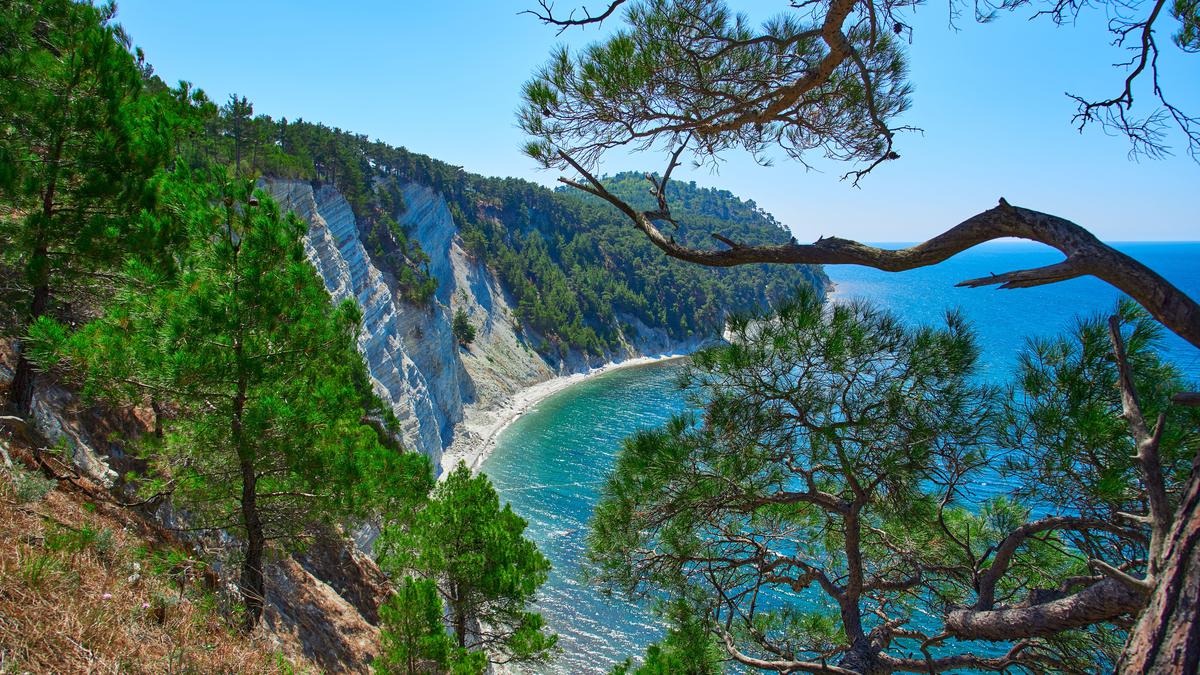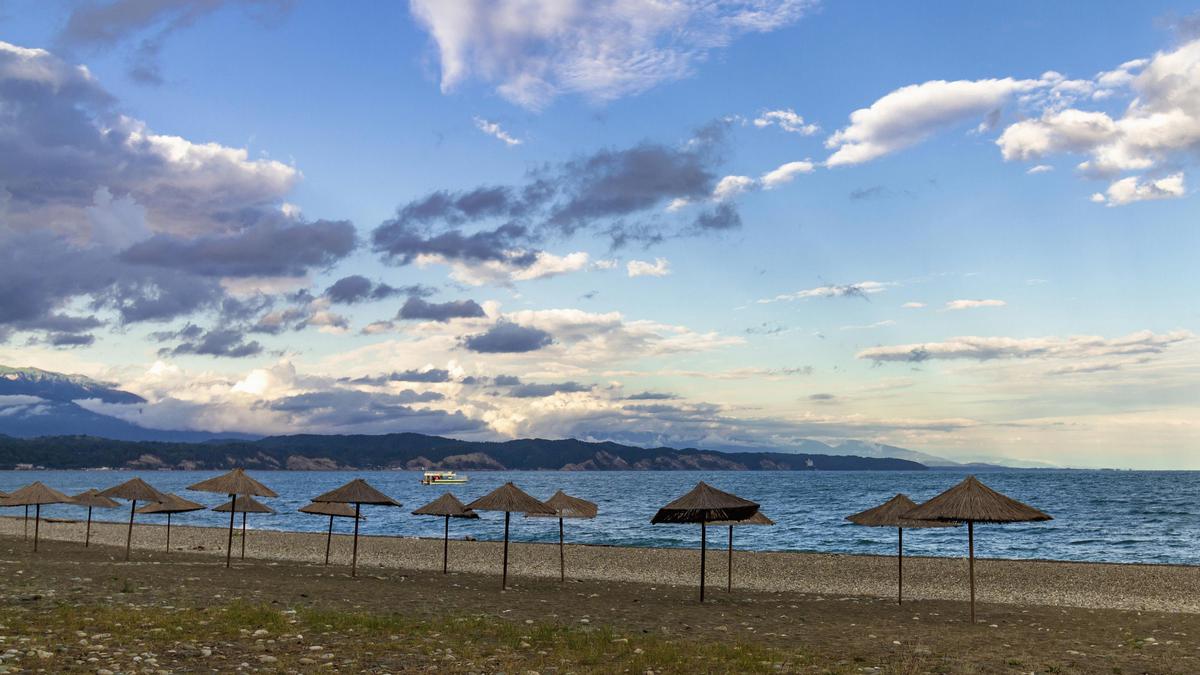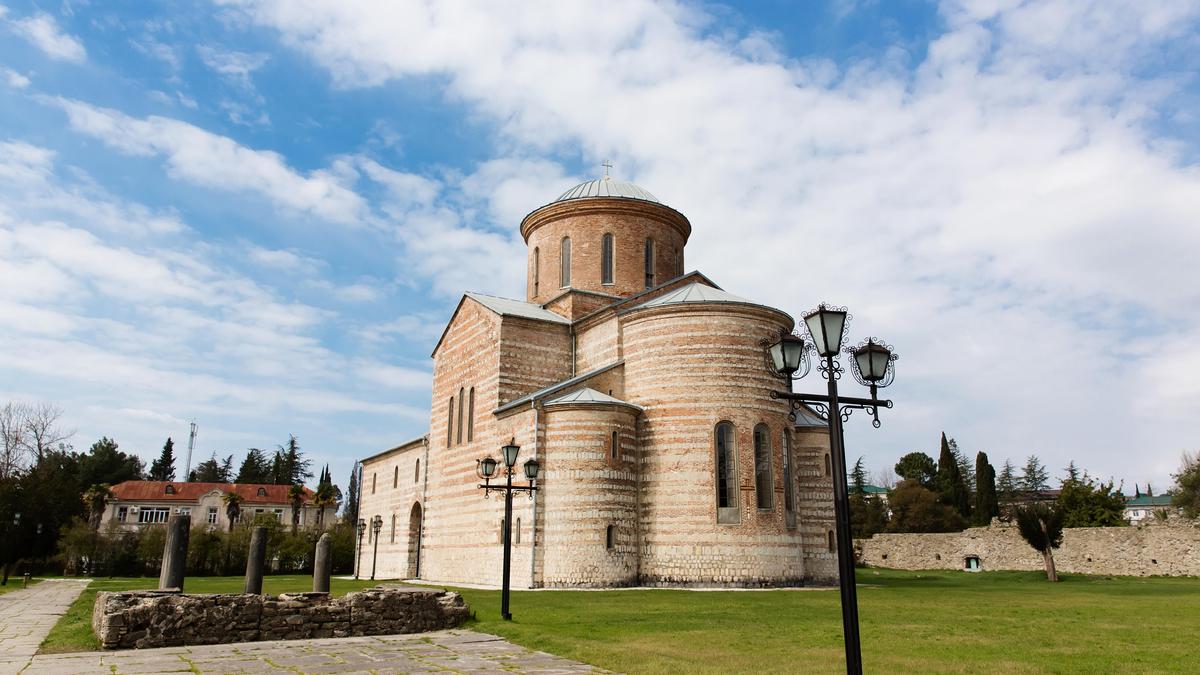
One of the main attractions of Georgia is the New Athos Caves. The length of the caves is very impressive, it reaches three thousand kilometers! You won't be able to complete them all in one day.
The pine grove of the city of Pitsunda is part of a nature reserve. About thirty species of plants grow in the territories of this natural monument, which are listed in the Red Book of Georgia. The place is also remarkable for its recreational functions. Be sure to come here for everyone who wants to enjoy nature, and those who suffer from hypertension.
Pitsunda coniferous forest is part of the Pitsundsky-Myusersky Reserve. The area of the reserve is 2300 hectares. It should be noted that out of all 92 plant species of this reserve, 28 are listed in the Red Book of Georgia.

The city of Pitsunda is located in the southern part of the Caucasus Mountains, on the slopes of the Gagra and Bzyb ridges. The city is surrounded by greenery and is remarkable for its recreational and health-improving point of view. The uniqueness of the city is due to the Caucasian endemism, massifs of Pitsunda pine forests. The main therapeutic factor of the resort is the phytoncide substance (from the Greek phyton - a plant and the Latin caedo - to kill), which is secreted by these coniferous trees. It is a bactericidal, fungicidal and protistocidal substance that has a positive effect on patients with hypertension. It should be noted that the Pitsunda pine emits six times more phytoncido than ordinary pine species.
The very name of the city (in Georgian "Bichvinta") is associated with the word needles (in Georgian "pichvi"). On the site of the present city in the 4th century BC. Greek colonists built the city of Pitius (Greek: Пιτυοῦς - needles). In ancient times, Pitiunt was a great cultural center, as evidenced by archaeological excavations carried out in the 50s of the twentieth century. On the territory of the city, the oldest traces of a sewer system, a bathhouse, a wine cellar, jewelry and ceramic workshops were discovered.

Pitsunda was the oldest center of Christianity in the Caucasus. Back in 325, the Bishop of Pitsunda Stratofil was a participant in the First Ecumenical Church Assembly.
The ruins of a three-nave basilica of the 5th century have been preserved on the site of the ancient settlement of the Pitsunda territory. The floor of the basilica, decorated with marble and mosaics, bears traces of Roman culture. This testifies to the intensive external cultural and trade relations of Pitsunda. This is also confirmed by the ruins of one of the oldest defensive structures of the city, the Roman Castellum (I-II centuries), preserved on the territory of the city.













32 comments
Log in to leave a comment
Впервые из статьи узнала про пицундскую сосну, оказывается она выделяет вещество фитонцидо, что очень положительно влияет на гипертоников
Впервые из статьи узнала про пицундскую сосну, оказывается она выделяет вещество фитонцидо, что очень положительно влияет на
Город весь утопает со всех сторон в зелени, и уникальность его обусловлена кавказским эндемизмом, массивов лесов пицундской сосны. Здесь же располагается заповедник, площадью 2300 га.
Новоафонские пещеры длиной 3000 км за один день – не пройти.
Сосновая роща города Пицунды – часть природного заповедника, где растут 30 растений занесённых в Красную книгу.
Ранее здесь был греческий город и найдены следы от канализационной системы, бани, винного погреба, ювелирной и керамической мастерских.
Сохранились развалины базилики V века. П, со следами римской культуры.
Являляясь древнейшим центром христианства на Кавказе, ещё в 325 году местный епископ Стратофил участвовал в Первом Вселенском церковном Соборе.
Лечебный фактор – вещество фитонцид (убивать), выделяемое хвойными деревьями. Это бактерицидное, фунгицидное и протистоцидное вещество исцеляющее гипертоников. Пицундская сосна выделяет в шесть раз больше фитонцидов, чем обычные виды сосны.